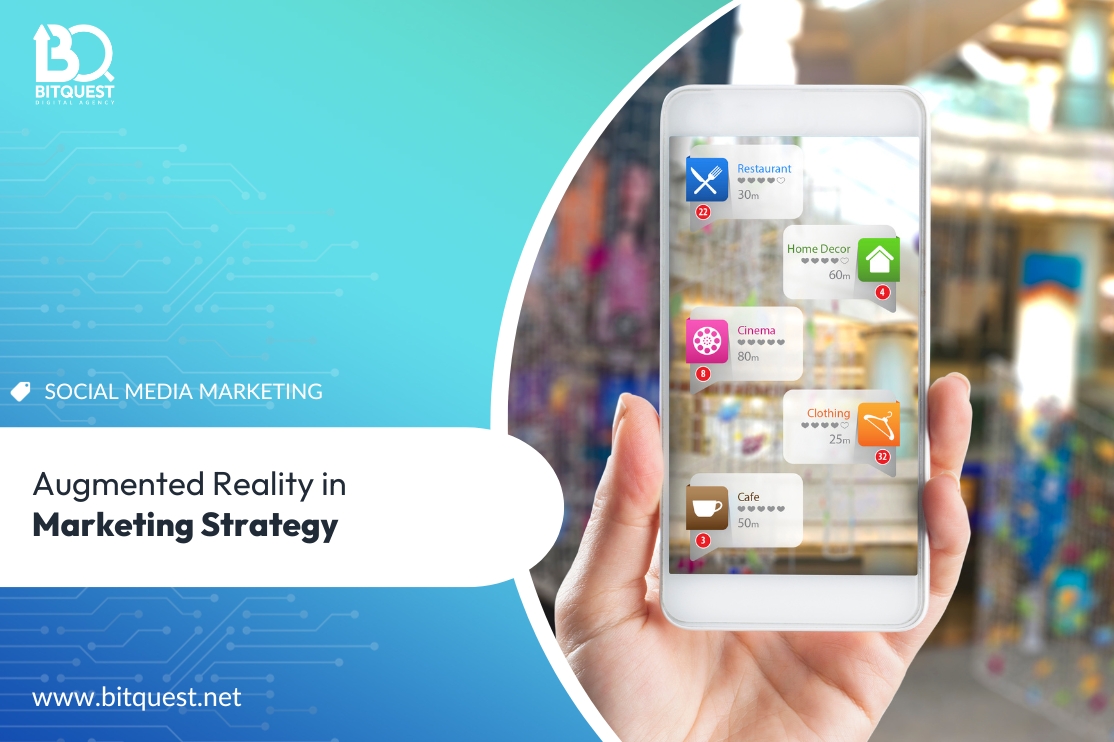Ways to Include Augmented Reality in Your Marketing Strategy

20 January 2023
Augmented Reality is highly trending now and marketers are looking for ideas to incorporate them into their marketing strategy. Think about taking gamification to advertising with enhanced interaction and immersion using augmented reality. In terms of marketing, AR can open extensive windows of opportunities for you to explore. For example- You can include virtual tours and case studies that the user manipulates to navigate the offer that is of greatest value to them. We bring you ways to include Augmented Reality in your marketing strategy-
1. Promotion of products and brands
Augmented reality brings products to life more effectively than a picture or video, as people can discover them and interact with them. Unprecedented insights into products help consumers make purchases. It is easy to bring life promotional brochures, book and magazine pages, advertisements and film posters just by holding the smartphone in front of the subject. For example, in 2018, Ready Player One promo campaign had AR-powered posters. When people were scanning them through Facebook's in-app camera, unique content would appear. The engagement between a brand and creative and innovative experiences is likely to increase positive brand perception. For example, Onix-Systems has recently enriched its printed booklets with an educational and entertaining experience. Within the Onix AR mobile app, users move the camera to a brochure, and it reveals company stats, projects overview, and a 3D model of headquarters.
2. Try before You Buy
Customers like to try products before purchasing them. Fitting rooms, cosmetic samples, automobile test drives and many other related concepts testify to the effectiveness of this sales strategy. AR negates the need for a large physical inventory, allowing customers to try dozens or hundreds of items that meet their needs. AR has the ability to shine which is in creating a virtual fitting room or dressing room. When it comes to buying clothes, the dressing room is a necessary evil. Customers have to take a pile of clothes items to the dressing room and then have to hire staff to constantly restore missing items. In addition, a store is limited by inventory when it comes to offering customers clothes to try. Sales soared. According to a Digital Bridge report and noted in The Drum, "42% of shoppers think using AR will make it easier for them to make decisions and reduce the time between browsing and final purchase." The more ways there are to make the online experience as informative as possible, the greater the potential for sales. Number of returns and cost reduction. Online returns are 30% on average, while brick and mortar is less than 10% on average. The biggest reason for this disparity is the ability to try on items before purchasing. Now with the AR option, ecommerce stores can provide customers with the ability to try before purchasing, helping customers make better purchasing decisions and reduce returns.
3. Leverage augmented reality for B2B
Professional selling is often a multi-step process. Although initial contact can be made by a website, business card, brochure or a casual meeting, there is no replacement for a good sales pitch between a skilled salesperson and a team of decision makers. Augmented Reality adds an entirely new dimension to this pitch, giving prospective customers a new way to interact with the products or services they are considering purchasing.
4. Create a buzz around the brand
Augmented reality can also be used as part of an indirect sales and marketing strategy. While previous AR applications have focused on a direct strategy to facilitate sales, AR can also be used to enhance brand positioning. The experience of creating a novel, unexpected or fun augmented reality can be the result of an important discussion for a brand if executed properly. AR is a relatively new phenomenon for most people, meaning that a well-designed AR experience will generate people talking and lasting memories.
5. The Take Away
AR is one of the hottest topics in the market. They can be powerful marketing tools because visuals provided by AR are great at telling stories, explaining complex concepts, sharing information in an entertaining way, and reducing language barriers. They provide unique, personalized and immersive digital experiences that improve customer engagement. Such virtual experiences make consumers memorable with products and brands and make shopping decisions easier. They are still relatively new technologies, and thus deserve further discussion.

